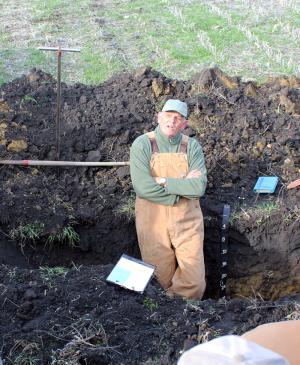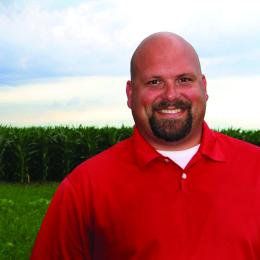In early winter, local producers, soil scientists with the USDA-Natural Resources Conservation Service (NRCS), and seed specialists with ProHarvest Seeds held a Cover Crop Field Day in Streator, Illinois to show curious farmers how well cover crops can affect soil quality.
An Oldie but a Goodie
- Jay Whalen
- Streator, Illinois
- Acres: 1,000 with Father John and Sister
- Crops: Corn and Soybeans
- Planting: All No-Till
- Covers: Different seed mixes using different planting dates on several field plots
Interest in using cover crops continues to increase across Illinois. The number of landowners experimenting with cover crops is growing just about as well as the crops did after harvest. Earlier last winter, local producers, soil scientists with the USDA-Natural Resources Conservation Service (NRCS) and seed specialists with ProHarvest Seeds held a Cover Crop Field Day in Streator, Illinois to show curious farmers how well cover crops can affect soil quality and offer forage solutions for livestock operators.
Local NRCS District Conservationist Mark Baran wants to get the word out about the benefits and the soil health improvements cover crops offer. “Telling producers about the program options and financial assistance my agency offers is one thing, but I’m lucky to have two local producers who have been experimenting with cover crops on their own ground, with their soil and using their livestock herds right here in LaSalle County. You put us all together and we are really able to tell others about it. We can actually show them how well these cover crops are working out,” said Baran.
Jay Whalen is a farmer who also works for ProHarvest Seeds as a seed specialist. For the tour crowd, it was obvious to see that Jay is a big believer and enthusiastic supporter for the benefits of using cover crop mixes. Jay is learning first-hand how use of diverse cover crop mixes offers the most benefits—tangible benefits--for his ground.
“I’ve been using cover crops on these test plots for two years now and can tell you I have seen improvements in the quality of the soil. I am a believer. Now we just need to show others how it’ll work for them.”
Whalen had cover crops aerially seeded on his 60-acre test plot for about $11-$15 per acre, which strictly covered application costs, not seed. Jay sees cover crop use as a way to reduce risk. “It all comes down to proper timing and planting dates, adequate rainfall, and sunlight availability for good plant growth. That’s all you need.”
According to Whalen, farmers understand the value of using vegetative cover, but we are still learning. Working as a team, Jay and Baran performed several test runs on his 60-acre section, using different start and planting dates and different species mixes. He was lucky to receive moisture and rainfall and had successful plantings for tour participants to view and examine.
“There are many factors and realities present in agriculture these days to make cover crops a safe, profitable, and environmentally sound option for nutrient management,” said Whalen. Baran confirms Jay’s annual ryegrass root bed makes a perfect seedbed for his spring crops. While they don’t yet have yield data, the soil improvements are there.

To prove that, NRCS’s Soil Health specialist, Roger Windhorn, dug a soil pit right across the center of Jay’s test plots. Windhorn offered his soil expertise and conducted a few quick soil test demonstrations to show organic matter levels, extensive root depth, and healthy soil structure found beneath the cover crops, which included radishes--today's hottest cover crop.
“There are many factors and realities present in agriculture these days that make cover crops a safe, profitable, and environmentally sound profiles in soil health Jay Whalen option for nutrient management,” said Whalen. His sister, Melissa Whalen Smith, is 100% behind Jay’s newfound interest. She is a long-time believer in the value of conservation cover crops since she worked for 10 years as a Resource Conservationist at the LaSalle County Soil and Water Conservation District office. Smith sees her brother and father-in-law discover what cover crops can do. “It’s great to see what Jay’s making happen on the farm. We've seen our soils improve. We want to show others how to do the same on their ground,” said Smith.

Because these soils hold together, they resist erosion and allow for water infiltration--both are important to every farmer.

